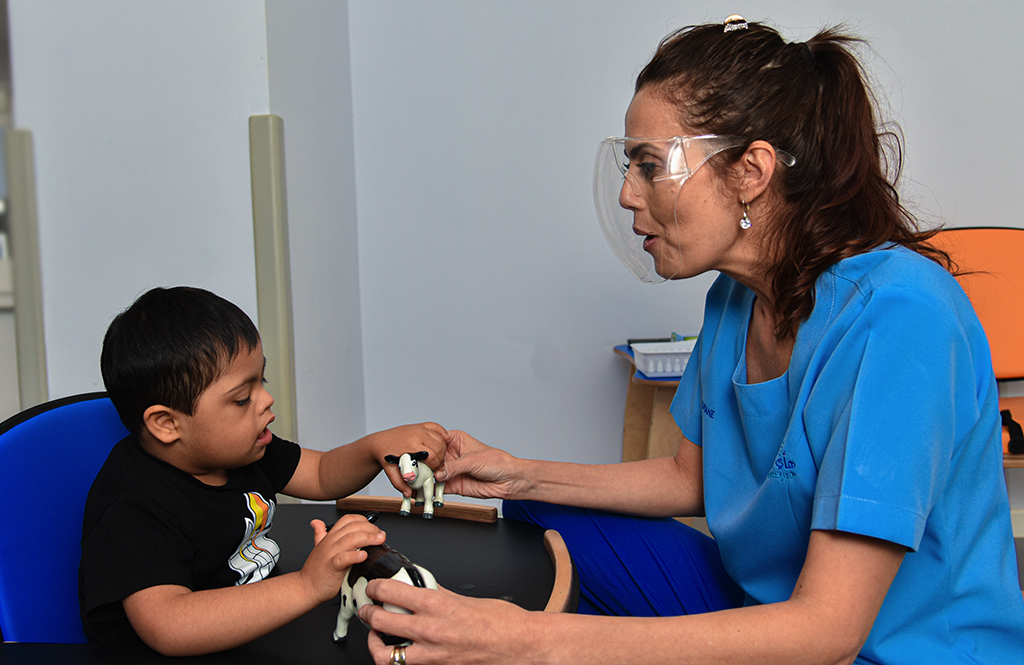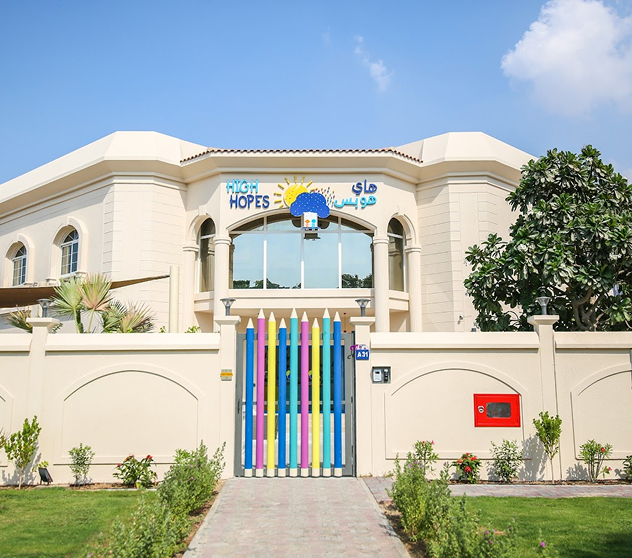The American Speech-Language-Hearing Association (ASHA) defines Childhood Apraxia of Speech (CAS) as a rare neurologic sensorimotor speech sound disorder.
A child diagnosed with CAS presents either an absence of verbal communication or poor intelligibility, including inconsistent vowel and consonant production in isolation, syllables, and words. This is caused by difficulties in initiating programming, combining, and sequencing the motor movements needed for the volitional, or intentional, speech.
If the child with CAS also displays other associated disorders such as autism spectrum disorder (ASD), additional difficulties in intention to communicate and ability to understand may be observed, which are respectively related to expressive and receptive language.
This article discusses how parents and therapists can support a child who is diagnosed with CAS. To learn more about apraxia symptoms, diagnosis, and treatment, please read our blog entry entitled What is Apraxia?.
Who should diagnose my child with CAS?
CAS should be diagnosed only by an experienced speech and language therapist who will first conduct a thorough assessment, investigate the child’s speech production, and verify their expressive and receptive language.
While some assessment tools that are not research-based exist, the Dynamic Evaluation of Motor Speech Skill (DEMSS) is currently the only research-backed assessment tool and hence the most reliable one.
Following the assessment, the therapist will interpret the results of all tests and protocols and use clinical judgement to establish a differential diagnosis. Finally, the therapist will devise a tailored therapy plan for the child, and they will identify whether the child requires support from other professionals, such as occupational and physical therapists. Only after that, the therapist will be able to establish a plan and select the best approach to be followed in providing therapy for a child with CAS.
What can I expect from my child’s speech and language therapist?
A speech and language therapist who is experienced in treating CAS will follow the best practice when assessing the child and establishing a tailored therapy plan and goals.
The therapist should be certified in various approaches to be able to select the most suitable therapeutic approach, devise a combination of several approaches, or suggest an interdisciplinary therapeutic approach for the child.
Another major role of the therapist is to empower parents to attend therapy sessions and help their child apply learning outcomes at home. When parents attend therapy sessions and learn how to provide their child with feedback on the accuracy of speech production, they make it easier for the child to acquire new motor planning patterns.
What other therapies may benefit my child?
Children with CAS may present gross and fine motor movement and/or sensory processing disorders. In this case, it is necessary to seek an occupational therapy assessment and, if needed, weekly therapy sessions to support the child in overcoming motor and sensory difficulties.
Is augmentative and alternative communication (AAC) always recommended for children with CAS?
AAC is always recommended for children diagnosed with a severe CAS. This will be indicated by the AAC specialist after conducting a detailed assessment of the child’s case severity, the age of the child, and any coexisting disorder or delays.
What can I expect regarding the development of my child?
The prognosis depends on the severity of the child’s CAS and age of diagnosis. For example, a 2-year-old child who is nonverbal is likely to respond to therapy faster than an older, nonverbal child. As in all speech and language disorders, early intervention is critical.
Another prognosis factor is the tailoring of the therapy plan to suit the child’s needs, as there is no universal approach to treating CAS. The therapist should be certified in a variety of approaches to be confident in making the right clinical decision that would benefit the child or even decide to mainly follow one approach with a combination of strategies from another approach.
The consistency of therapy and home practice also influences the child’s speed of response and prognosis. The ASHA recommends that children with CAS attend 30-minute speech and language therapy sessions four to five times per week. In addition, parents should be actively involved in the therapy process at home to support generalization in daily routines.
Finally, the presence of associated disorders influences a child’s prognosis. A child who presents only CAS may have a better prognosis than a child who presents additional associated disorders. For example, a child who has a diagnosis of ASD may have pragmatic difficulties such as poor joint attention and sensory integration disorder, leading to hypersensitivity and limiting the possibility of tactile cues.
Considering all above, it is not possible to define a prognosis, or a rate of improvement based solely on the diagnosis, as each child and their family have their own pace in dealing with CAS symptoms and therapy.
How may I support my child?
Every parent has the role of advocating for their child’s future and best quality of life. Parents of children with CAS can support their children’s therapy process by looking for a trained therapist and by participating in the decision-making regarding their child’s therapy along with the therapist. It is also important that parents get involved in discussing and making decisions for the right approach along with the therapist.
Following ASHA’s recommendation of 4-5 sessions per week is not always possible in clinical practice. Parents might not be able to afford or dedicate enough time for frequent therapy sessions, especially as some children with CAS may require interdisciplinary therapeutic interventions. However, parental involvement and home practice remain crucial for the child to achieve faster results and generalize skills, including the acquisition of new motor planning patterns and their incorporation into daily verbal interaction.
In summary, successful CAS therapy requires teamwork. As for other speech disorders, the prognosis will depend on the child’s condition and pace, and it can be improved by following the recommendation discussed in this blog entry.
High Hopes’ speech and language therapists are experienced in treating CAS and are happy to answer any questions you may have. Contact us today to learn more.




